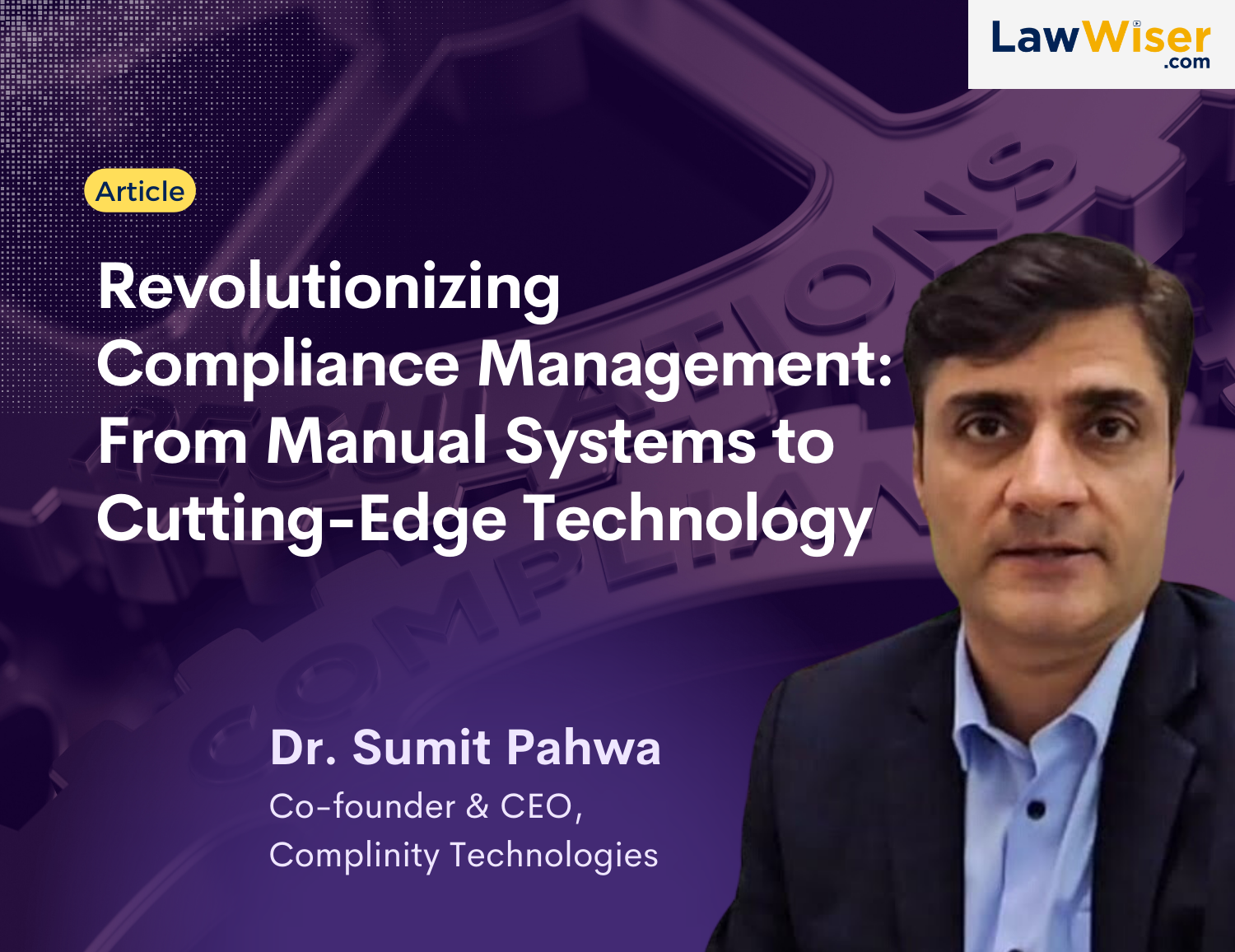Senior management responsible for compliance management must navigate a complex array of requirements to ensure their organizations remain compliant with all statutory, regulatory and industry specific laws. Traditionally, many companies have relied on manual Compliance Management Systems (CMS) to track and adhere to these regulations. However, with the advent of advanced technologies, there is a compelling case for transitioning to automated systems utilizing cutting edge technologies. This blog will explore the intricacies of manual CMS, the challenges they present, the transformative technologies impacting compliance management, and the myriad benefits of adopting these technologies.
Understanding the Manual Compliance Management System
A manual Compliance Management System is a traditional approach where compliance-related tasks are handled through paper-based processes, spreadsheets, emails, and manual record-keeping. These systems require substantial human intervention to monitor and update latest Legal Updates and ensure that their team is adhering to the relevant Central, State and Municipal laws.
Challenges in Manual Compliance Management
Time-Consuming Processes: Manual systems demand significant time and effort to manage. Each compliance task, from data entry to tracking Legal Updates, must be performed by manually, leading to inefficiencies, errors and delays.
Increased Risk of Errors: Human error is a significant risk in manual systems. Mistakes in data entry, misinterpretation of regulations, and overlooking Legal Updates can lead to non-compliance.
Lack of Real-Time Monitoring: Manual systems do not provide real-time insights. By the time a compliance issue is identified, it may have already resulted in a violation, leading to fines or reputational damage.
Difficulty in Scalability: As organizations grow, the volume of compliance tasks increases. Manual systems struggle to scale efficiently, leading to bottlenecks and potential non-compliance.
Inefficiency in Reporting: Generating reports for audits or internal reviews is cumbersome with manual systems. Data needs to be collected from various sources, compiled, and then verified, which is both time-consuming and prone to errors.
Key Technologies Impacting Compliance Management Systems
The landscape of compliance management is being transformed by several key technologies:
Cloud Computing: Cloud-based compliance solutions offer scalability, accessibility, and flexibility, allowing organizations to manage compliance activities from anywhere and at any time. Cloud based Compliance Management Systems also allows organizations to start small at low price point without having to build the software from scratch and worrying about the maintenance and upgrade.
Artificial Intelligence (AI) and Machine Learning (ML): AI and ML can automate the monitoring of regulatory changes, analyze vast amounts of compliance data for patterns indicative of non-compliance, and predict potential compliance risks. Technologies like OCR can also be used for auto form fills based on the relevant documents.
Robotic Process Automation (RPA): RPA can handle repetitive, rule-based tasks such as data entry, document processing, and compliance checks, significantly reducing the burden on human employees.
Benefits of Adopting Technology in Compliance Management Systems
Enhanced Efficiency: Automation of routine tasks frees up valuable human resources, allowing them to focus on strategic compliance issues. This leads to significant time savings and increased productivity.
Improved Accuracy: Technologies like AI and RPA minimize the risk of human error, ensuring that compliance tasks are performed accurately and consistently.
Real-Time Monitoring and Reporting: Advanced compliance systems provide real-time insights and analytics, enabling organizations to detect and address compliance issues proactively.
Scalability: Technology-driven compliance systems can easily scale to accommodate the growth of an organization in terms of employees, users, locations and businesses etc., ensuring that compliance processes remain robust and effective.
Cost Savings: Cloud based compliance management systems allow organizations to start small with limited users and companies to do POC (Proof of Concept). Long-term savings is gained from reduced labor costs, fewer compliance violations, and improved efficiency can be substantial.
Enhanced Security: Premium and established compliance management systems leverage technology for enhanced security features, ensuring that sensitive compliance data is protected against unauthorized access and breaches.
Better Decision-Making: Access to comprehensive data analytics and real-time dashboards and automated alerts empower senior management to make informed decisions regarding compliance strategies and risk management.
Conclusion
For senior management, the shift from manual to technology-driven Compliance Management Systems represents a strategic imperative. Embracing these advanced technologies not only mitigates the inherent challenges of manual systems but also positions organizations to better navigate the complexities of modern regulatory environments. By investing in cutting-edge compliance technologies, companies can achieve greater efficiency, accuracy, and scalability, ultimately safeguarding their reputation and ensuring long-term success.
This article is authored by Dr. Sumit Pahwa, Co-Founder & CEO, Complinity Technologies. The article may not necessarily deal with every aspect of the topic. It is not created to provide legal or other advice. The views expressed are of the expert(s) in the article and do not necessarily reflect LawWiser’s or their employees’ opinion.



 July 18, 2024
July 18, 2024








 September 2, 2025
September 2, 2025 0 COMMENTS
0 COMMENTS


